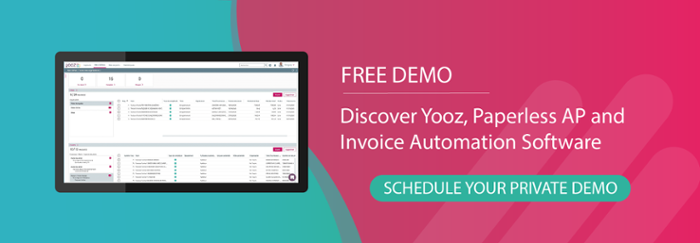In today’s fast-paced business environment, managing accounts payable (AP) across multiple entities can be an overwhelming challenge. For CFOs, accountants, and finance managers in multi-entity businesses, the complexity of navigating distinct accounting processes and multiple systems can be daunting. This is where AP automation comes in—a transformative solution designed to streamline operations, improve visibility, and enhance overall efficiency.
Understanding AP Automation for multi-entity businesses
AP automation, or accounts payable automation, leverages advanced technology to automate the entire accounts payable process, from invoice processing to approval workflows and payment disbursements. For multi-entity companies, this means unifying and harmonizing accounting processes across various subsidiaries or business units into a single, cohesive system—eliminating the pain points associated with managing multiple entities.
Why does AP Automation matter for finance professionals?
For finance professionals navigating multi-entity accounting, AP automation is not just advantageous; it’s essential. This accounting software provides a seamless way to manage the complexities of multi-entity operations, ensuring that accounting processes are efficient and error-free. The significance of an accounts payable automation solution in multi-entity businesses cannot be overstated—it streamlines workflows, reduces manual data entry errors, and offers real-time visibility into financial data across all business entities.
Challenges faced in Accounts Payable for multi-entity businesses
- Managing multiple entities: One of the primary challenges for multi-entity companies is maintaining consistency in accounts payable across various entities, each with its own specific procedures.
- Inefficiencies in manual processes: Manual processing of AP can lead to significant inefficiencies. Data entry errors, lost invoices, and time-consuming tasks can result in delays and increased operational costs, especially in multi-entity operations with an unlimited number of transactions.
- Risks of errors and fraud: manual accounting processes are more vulnerable to errors and fraud. With numerous touchpoints and insufficient visibility, discrepancies can easily go unnoticed, leading to financial losses and compliance issues.
Benefits of AP Automation for
multi-organization enterprises
AP automation is revolutionizing how businesses manage invoices and payments, enhancing efficiency, visibility, and cash flow management. By using a multi-entity accounting software solution, organizations can automate AP processes and make more informed financial decisions while gaining a consolidated view of their financial health.
Whether utilizing ERP like Sage Intacct or Dynamics GP, the right AP automation solutions can save time, reduce manual entry, and support the accounting department in fostering accurate financial data management across all subsidiaries. Embracing an accounts payable automation solution enables multi-entity businesses to transform their operations and thrive in today’s competitive environment.
| Key benefits | Description |
| Streamlined invoice processing | Provides a unified platform for prompt and accurate invoice processing. |
| Enhanced visibility and control | Offers real-time insights into invoice and payment statuses for better control. |
| Improved cash flow management | Ensures timely payments and better forecasting for optimized working capital. |

Key features to look for in AP Automation solutions for multi-entity businesses
Integration capabilities with existing accounting systems: when selecting an AP automation solution, prioritise its ability to seamlessly integrate with your current accounting software and ERP systems. This ensures smooth transitions and operational continuity across multiple entities.
Multi-entity support and customisation: opt for robust multi-entity accounting software that offers customisation options to meet the unique needs of each entity while maintaining a consistent approach across all business units.
Security measures and compliance: ensure the chosen accounts payable automation solution has strong security measures, such as data encryption and user authentication, while complying with relevant financial regulations to protect your businesses from potential risks.
Real-world success stories of AP Automation: The case of Five Guys
Five Guys UK has partnered with Yooz to automate its Purchase to Pay (P2P) processes, with plans to expand into Spain and Germany, handling an expected 4,000 monthly invoices. The finance team is using Yooz's AI and RPA software for complete Accounts Payable (AP) automation.
Customized for Five Guys' multisite operations and implemented in just two weeks, Yooz's solution now manages over 90% of invoices while integrating seamlessly with Sage X3. This automation enhances security and traceability across UK and Spanish restaurants, establishing Yooz as a valuable partner with plans for further expansion.
Yooz supports over 1,000 restaurants and hotels worldwide, offering multi-location management features that provide insights into expenses, making it an ideal fit for Five Guys.
Unlocking efficiency: mastering AP Automation across multiple entities!
Implementing accounts payable automation starts with assessing your current accounting processes to identify pain points and understanding the specific needs of each entity involved. Once you have a clear picture, the next step is to select the right AP automation software, considering factors like integration capabilities and security features.
After choosing the appropriate automation solution, focus on planning and executing the implementation. This involves setting up the system, training your accounting team, and conducting thorough testing to ensure a smooth transition.
The future of AP Automation in multi-entity businesses
The future of accounts payable automation looks bright, driven by ongoing technological advancements reshaping financial operations. Innovations like artificial intelligence (AI) and robotic process automation (RPA) will transform the industry. These technologies enable organisations to automate AP processes, greatly improving efficiency and accuracy.
AI can analyse large financial data sets to identify patterns and anomalies, while RPA manages repetitive tasks like invoice processing and manual entry, minimizing human error. This combined approach allows staff to focus on more strategic roles, enhancing productivity.
As technology evolves rapidly, the adoption of AP automation solutions is expected to rise significantly. Multi-entity companies that embrace these advancements will gain a competitive edge. By streamlining operations, reducing processing times, and improving financial control, organisations can enhance their bottom line and agility in a fast-changing market. This shift toward automation will redefine how businesses handle their financial processes, leading to a more efficient future in accounts payable.
In conclusion, AP automation is essential for multi-entity businesses. It streamlines accounting processes, improves visibility, and enhances overall efficiency. For CFOs, accountants, and finance managers, adopting accounts payable automation is about staying competitive and ensuring long-term success.
Why Yooz?
Yooz stands out as a leader in AP automation for multi-entity businesses thanks to its customisable features and seamless integration with existing systems. The platform offers an intuitive interface that enables smooth management of invoices and payments across all entities, ensuring real-time visibility and optimal control of financial operations. Furthermore, Yooz is committed to ensuring compliance with relevant financial regulations while implementing robust security measures to protect sensitive data. By choosing Yooz, multi-entity businesses can benefit from efficient automation of their accounts payable processes, leading to a significant reduction in operational costs and improved profitability.
FAQ about AP Automation for multi-entity businesses
What is AP automation?
How does AP automation benefit multi-entity businesses?
What features should I look for in an AP automation solution for multi-entity businesses?
How long does it typically take to implement an AP automation solution?
How do I ensure that my AP automation solution is secure?








